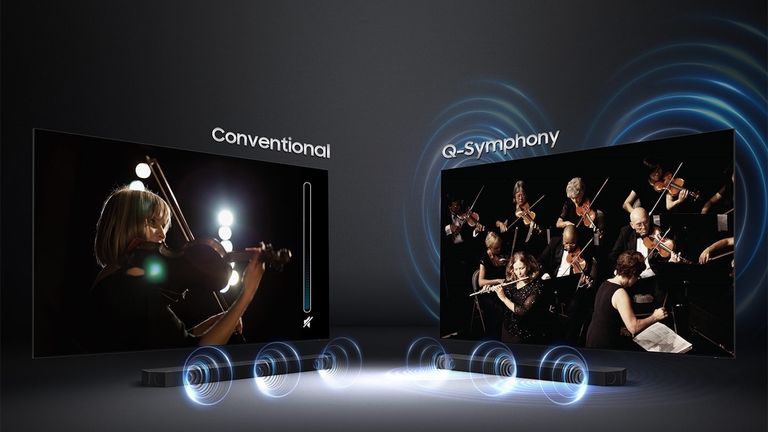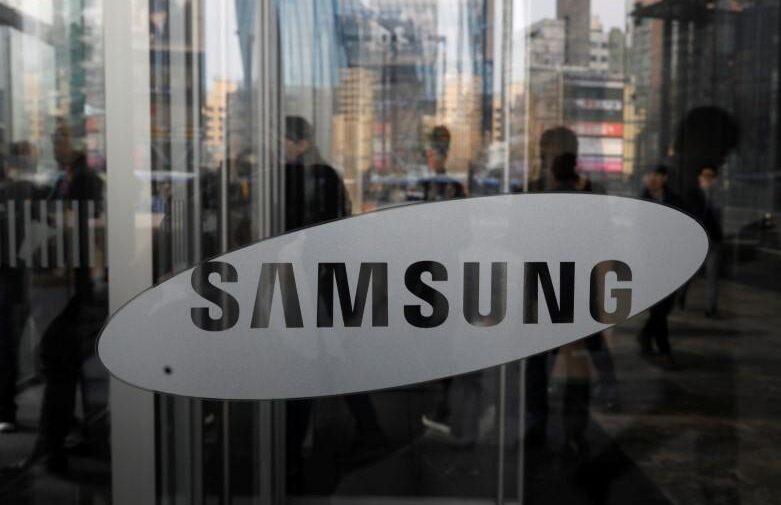Trading Symphony: Samsung’s Harmonious Approach to Global Markets
In the dynamic landscape of global business, companies often find themselves navigating through a complex orchestra of challenges and opportunities. Among the few that have mastered the art of orchestrating this symphony is Samsung, a South Korean conglomerate that has seamlessly blended innovation, market strategy, and adaptability to create a harmonious approach to global markets.
Definition of Trading Symphony
Before delving into Samsung’s unique approach, it’s essential to understand the concept of “Trading Symphony” in the business context. Trading Symphony refers to the art of synchronizing diverse elements within a business – from marketing strategies and innovation to market entry and sustainability efforts – to create a harmonious and effective global presence.
Brief Overview of Samsung’s Global Presence
Samsung, founded in 1938, started as a small trading company in Daegu, Korea. Over the decades, it has evolved into a global giant with interests in various industries, including electronics, finance, heavy industry, and more. With a significant presence in over 80 countries, Samsung’s journey showcases a remarkable evolution in its market strategy.
The Evolution of Samsung’s Market Strategy
Early Years: Domestic Focus
Samsung’s initial years were marked by a strong focus on the domestic market. The company strategically established itself as a reliable and innovative brand in South Korea before venturing into international territories.
Expansion into International Markets
As global markets beckoned, Samsung didn’t hesitate to expand its footprint. The company carefully studied each market, adapting its products and marketing strategies to suit the unique needs and preferences of diverse consumers worldwide.
Embracing Diversification
Recognizing the importance of diversification, Samsung strategically entered various industries. This diversification not only shielded the company from market-specific risks but also allowed it to tap into new opportunities, creating a well-rounded and resilient business model.
The Concept of Trading Symphony
Defining Trading Symphony in Business
In the context of Samsung, Trading Symphony involves the seamless integration of various business elements, creating a cohesive and effective strategy that resonates across international markets. This approach involves not just reacting to market trends but orchestrating them in a way that aligns with the company’s long-term vision.
Integration of Samsung’s Global Operations
Samsung’s success lies in its ability to integrate operations across the globe. From manufacturing and supply chain management to marketing and customer service, the company operates as a synchronized entity, allowing for swift adaptation to changing market dynamics.
Achieving Balance in Market Dynamics
Trading Symphony, as exemplified by Samsung, emphasizes the importance of balance. Balancing innovation with market demands, diversification with specialization, and global strategies with local nuances creates a harmonious equilibrium that fosters sustained growth.
The Role of Innovation
Technological Advancements
At the heart of Samsung’s success is its commitment to technological advancements. The company consistently invests in research and development, ensuring that its products stay ahead of the curve in terms of innovation and functionality.
Research and Development Initiatives
Samsung’s R&D initiatives are not just about creating cutting-edge products but also about anticipating market trends. The company’s proactive approach to innovation allows it to lead rather than follow, shaping consumer preferences and setting industry standards.
Product Diversification
From smartphones and televisions to home appliances and semiconductor technology, Samsung’s product portfolio is diverse yet interconnected. This diversification is a strategic move, allowing the company to weather market fluctuations and appeal to a broad consumer base.
Navigating Global Challenges
Economic Fluctuations
In the volatile world of global markets, economic fluctuations are inevitable. Samsung’s Trading Symphony approach equips the company to navigate through economic uncertainties by diversifying revenue streams and optimizing operational efficiency.
Geopolitical Considerations
Operating in diverse geopolitical landscapes requires a nuanced understanding of local dynamics. Samsung’s approach involves adapting its strategies to geopolitical realities, fostering positive relationships, and mitigating risks associated with international tensions.
Cultural Sensitivity in Marketing
One size does not fit all in global marketing. Samsung recognizes the importance of cultural sensitivity and tailors its marketing campaigns to resonate with diverse audiences, respecting local traditions and preferences.
Sustainability and Corporate Responsibility
Environmental Initiatives
In an era of increasing environmental consciousness, Samsung has taken significant strides in environmental sustainability. The company actively pursues eco-friendly practices in manufacturing, packaging, and disposal, aligning its business goals with global sustainability efforts.
Social Responsibility Programs
Beyond profit-making, Samsung embraces social responsibility. The company invests in community development, education, and healthcare, creating a positive impact in the regions where it operates.
Ethical Business Practices
Maintaining ethical business practices is a cornerstone of Samsung’s Trading Symphony. Upholding transparency, fair trade, and ethical conduct not only fosters trust among consumers but also enhances the company’s reputation on the global stage.
Adapting to Technological Trends
Embracing E-Commerce
As the world shifts towards digitalization, Samsung has seamlessly integrated e-commerce into its sales strategy. Embracing online platforms allows the company to reach consumers directly, providing a personalized and convenient shopping experience.
Leveraging Digital Marketing
Samsung’s digital marketing strategies go beyond conventional advertising. The company utilizes data analytics and targeted marketing to understand consumer behavior, ensuring that promotional efforts are not just impactful but also resonate with the intended audience.
Integration of AI and IoT
The future of technology lies in artificial intelligence (AI) and the Internet of Things (IoT). Samsung has been at the forefront of incorporating these technologies into its products, creating a connected ecosystem that enhances user experience and anticipates consumer needs.
Challenges Faced Along the Journey
Competitor Pressures
In the competitive landscape of global markets, Samsung faces continuous pressure from rivals. The company’s resilience lies in its ability to innovate, differentiate, and stay ahead in the race.
Regulatory Hurdles
Operating in diverse jurisdictions means navigating through a maze of regulations. Samsung’s legal and compliance teams play a crucial role in ensuring that the company operates within the bounds of local and international laws.
Consumer Perception Challenges
Maintaining a positive brand image is essential. Samsung acknowledges the importance of consumer perception and actively addresses challenges, turning them into opportunities for brand enhancement.
Future Outlook and Expansion Plans

Emerging Markets
Samsung’s growth trajectory includes a focus on emerging markets. By identifying and investing in regions with untapped potential, the company aims to secure its position as a global leader in diverse markets.
Investments in Future Technologies
The pace of technological advancement is relentless. Samsung’s commitment to staying at the forefront involves substantial investments in emerging technologies, ensuring that it continues to lead in innovation.
Long-term Vision for Global Presence
Trading Symphony is not just a short-term strategy for Samsung; it’s a philosophy that guides the company’s long-term vision. The goal is not just market dominance but sustained, responsible global presence that aligns with the evolving needs of society.
Conclusion
Recap of Samsung’s Harmonious Approach
Samsung’s Trading Symphony is a culmination of strategic planning, adaptability, and a commitment to excellence. The company’s harmonious approach to global markets has allowed it to not only weather challenges but also set industry standards and inspire others.
Implications for Global Businesses
The Samsung case study offers valuable insights for businesses aiming to establish a global presence. Trading Symphony is not a one-size-fits-all solution, but a dynamic strategy that requires continuous evaluation and adaptation to changing market dynamics.
The Ongoing Journey of Trading Symphony
As Samsung continues its journey, the concept of Trading Symphony evolves. The company’s story is a testament to the fact that success in global markets requires not just a symphony of actions but a continuous commitment to refining and perfecting the tune.
FAQs :
- How has Samsung adapted its marketing strategies to suit diverse global audiences?
Samsung recognizes the importance of cultural sensitivity and tailors its marketing campaigns to resonate with diverse audiences. This involves understanding local traditions, preferences, and adapting promotional efforts accordingly.
- What role does innovation play in Samsung’s success?
Innovation is at the core of Samsung’s success. The company invests significantly in research and development, ensuring that its products stay ahead of the curve in terms of technology and functionality.
- How does Samsung navigate economic fluctuations in global markets?
Samsung’s Trading Symphony approach equips the company to navigate economic uncertainties by diversifying revenue streams and optimizing operational efficiency.
- What are the key challenges faced by Samsung in the global market?
Samsung faces challenges such as competitor pressures, regulatory hurdles, and consumer perception challenges. The company addresses these challenges through innovation, compliance, and proactive brand management.
- What is Samsung’s long-term vision for its global presence?
Samsung’s long-term vision involves not just market dominance but a sustained, responsible global presence that aligns with the evolving needs of society. The company aims to continue leading in innovation and adapting to emerging technologies.






